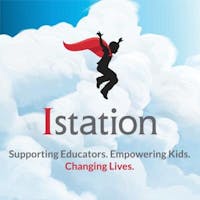It wasn't until she broke down in tears that I realized my student needed help.
In 2012, one of my 5th graders, Ashley, started the year reading at a pre-K level. Ashley was an under-the-radar student who’d moved from school to school and missed the intervention opportunities she needed. She arrived in my class lacking confidence and behaving as if no one cared about her. She was struggling academically and she needed someone to notice.
At the time, I was in my third year of teaching and was still learning how to quickly identify struggling students. For the first few weeks of school, Ashley seemed to catch on to new content easily. Then one day I noticed her copying from a peer’s paper during an assignment. While I hadn’t known Ashley long, this seemed to be out of character. When I pulled her aside during recess to ask about what I had seen, she crumbled. This was the moment I realized Ashley desperately needed my help.
I’m sure many teachers have found themselves in similar situations; we’ve all worked with under-the-radar students who need our attention. Yet identifying exactly who these students are and knowing the best way to give them the support they need isn’t always clear.
Simply identifying them takes effort and the right set of tools. This student is neither the star pupil acing every assignment nor the one whose grades consistently highlight a need for intervention. Instead, the under-the-radar student succeeds just enough to get by, but does so without an adequate understanding of the concepts and building blocks necessary to future learning and progress. These are the kids who need our attention but whose scores and behavior simply aren’t demanding it.
The National Center for Education Statistics reported that 22 percent of 4th grade students were reading below their basic grade level in 2013. Earlier NCES studies have shown that even when overall reading levels do not change significantly from prior years, the gap between good and poor readers can widen among students this age. This is what I was seeing with my struggling student; by 5th grade, Ashley had fallen into the gap. She’d flown under the radar for far too long.
In her book Teach Them All to Read, Elaine K. McEwan explains that many factors can lead a child to fall through the cracks, including environmental demographics, genetic predisposition to speech and/or hearing impairments, and education experiences. Most of these challenges hide in plain sight; you can’t see them unless you look for them. This was certainly true in Ashley’s case. She lacked early literacy experience and English proficiency, was struggling with an unidentified learning disability, and had changed schools too frequently to benefit from effective teaching methods.
For teachers, the struggle to differentiate is real. Even when using formative assessment and the three-tiered RTI (response-to-intervention) process, identifying under-the-radar students can still be a challenge. The RTI process is a multi-tier approach to early identification and support of students with learning and behavior needs, but it’s possible to lose sight of students situated between tiers. How can we catch these students before they fall through the cracks?
I was lucky. I had access to tools that helped me identify students who might otherwise have flown under my radar. In my own 5th grade classroom, we used Istation, an adaptive e-learning program. The formative data from Istation’s reports helped me pinpoint exactly what I needed to do to help each of my students grow.
More than providing data, however, the program suggested which intervention each student most needed. In Ashley’s case, the data first indicated that she would benefit from one-on-one tutoring and more small-group instruction. The program also grouped her with the students she’d most benefit from, those in similar instructional tiers and with similar rates of progress. As we worked together, the data generated by the program helped me keep track of Ashley’s progress in real time. Because every student was literally on the program’s radar, no student could fly under it—including Ashley.
With the reports tracking her progress and rate of improvement, I was free to focus on Ashley’s other learning needs. I worked with my campus’s resource teacher and met with a diagnostician; together we learned Ashley had dyslexia. Knowing this, we were able to help Ashley improve her reading by four grade levels that year.
The first and hardest step was identifying Ashley as an under-the-radar student. But with the right tools and a solid support network, Ashley landed on our radar and received the help she needed.
Want to learn more? Read Istation’s free interactive e-brochure, Personalized Data Profiles.



